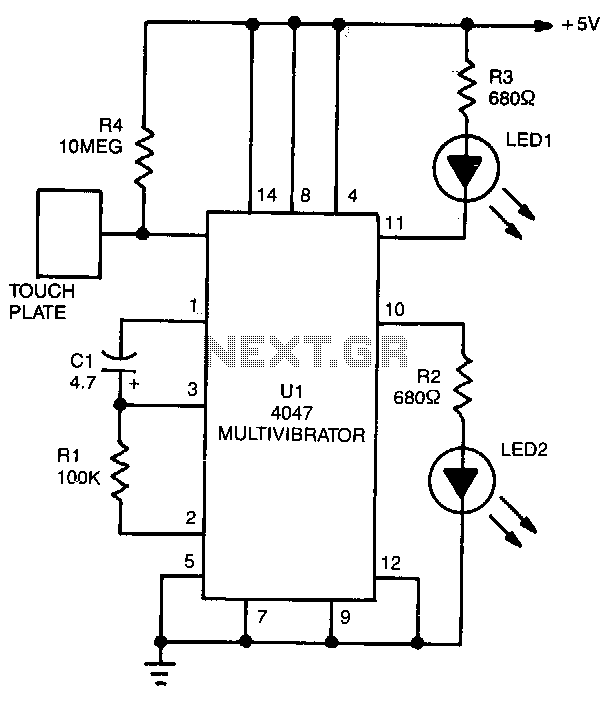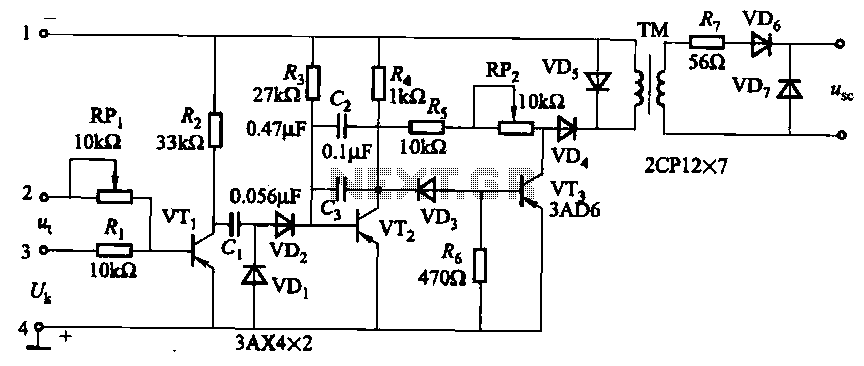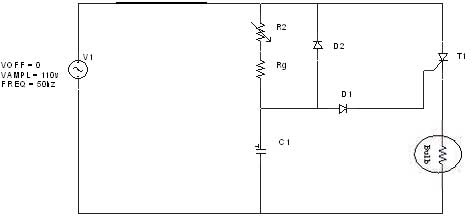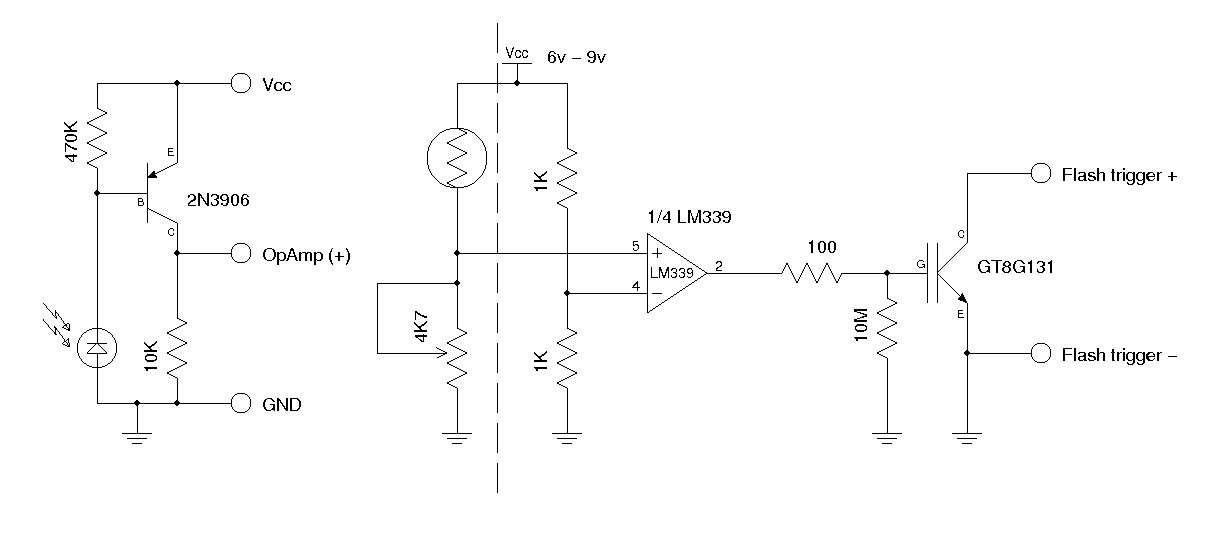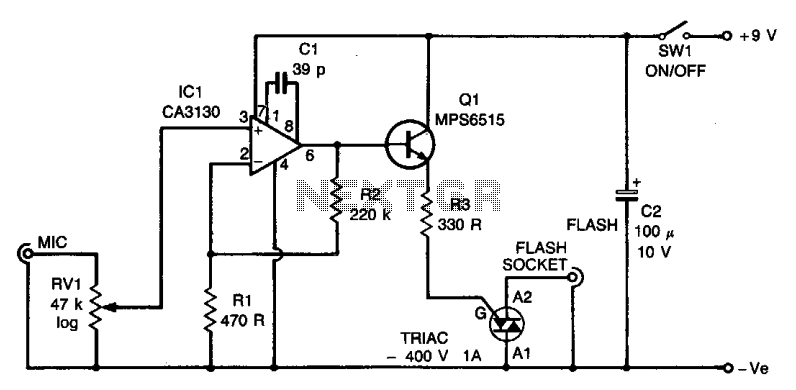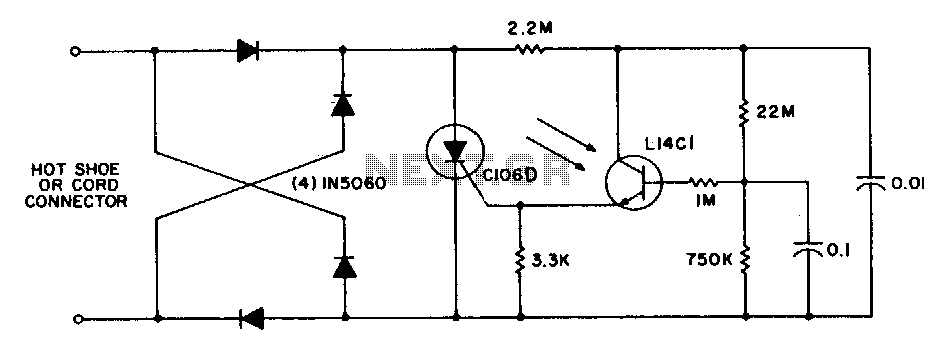
Schmitt trigger
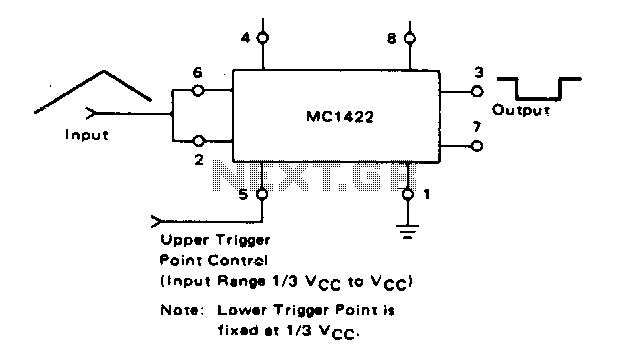
The lower trigger point is fixed at a percentage of Vcc, while the upper trigger point can be adjusted using Pin 5, allowing it to vary from Vi to slightly less than Vcc. The Schmitt trigger is capable of operating with input frequencies of up to 50 kHz.
The described circuit employs a Schmitt trigger configuration that utilizes hysteresis to provide stable switching characteristics. The lower trigger point, fixed at a percentage of the supply voltage (Vcc), ensures that the output transitions to a low state when the input voltage falls below this threshold. This fixed lower threshold is essential for preventing noise from causing unintended switching.
The upper trigger point is adjustable through Pin 5, which allows for fine-tuning of the transition from low to high output. This adjustability is crucial in applications where precise control over the switching threshold is necessary. The ability to set the upper threshold slightly below Vcc provides flexibility in accommodating various input signal levels while ensuring reliable operation.
The Schmitt trigger's capability to handle input frequencies up to 50 kHz indicates its suitability for high-speed digital applications. This frequency range allows the circuit to effectively process rapid signal changes without distortion or delay, making it ideal for use in pulse-width modulation, signal conditioning, and other digital signal applications.
Overall, the combination of a fixed lower trigger point and an adjustable upper trigger point, along with the high-frequency operation, makes this Schmitt trigger circuit versatile for a wide range of electronic applications. The design ensures robust performance in environments where signal integrity and precise control are paramount.The lower trigger point is fixed at % Vcc, but the upper trigger point is adjustable by means of Pin 5 from Vi Vcc to slightly less than Vcc The Schmitt trigger will operate with input frequencies up to 50 kHz. 🔗 External reference
The described circuit employs a Schmitt trigger configuration that utilizes hysteresis to provide stable switching characteristics. The lower trigger point, fixed at a percentage of the supply voltage (Vcc), ensures that the output transitions to a low state when the input voltage falls below this threshold. This fixed lower threshold is essential for preventing noise from causing unintended switching.
The upper trigger point is adjustable through Pin 5, which allows for fine-tuning of the transition from low to high output. This adjustability is crucial in applications where precise control over the switching threshold is necessary. The ability to set the upper threshold slightly below Vcc provides flexibility in accommodating various input signal levels while ensuring reliable operation.
The Schmitt trigger's capability to handle input frequencies up to 50 kHz indicates its suitability for high-speed digital applications. This frequency range allows the circuit to effectively process rapid signal changes without distortion or delay, making it ideal for use in pulse-width modulation, signal conditioning, and other digital signal applications.
Overall, the combination of a fixed lower trigger point and an adjustable upper trigger point, along with the high-frequency operation, makes this Schmitt trigger circuit versatile for a wide range of electronic applications. The design ensures robust performance in environments where signal integrity and precise control are paramount.The lower trigger point is fixed at % Vcc, but the upper trigger point is adjustable by means of Pin 5 from Vi Vcc to slightly less than Vcc The Schmitt trigger will operate with input frequencies up to 50 kHz. 🔗 External reference
Warning: include(partials/cookie-banner.php): Failed to open stream: Permission denied in /var/www/html/nextgr/view-circuit.php on line 713
Warning: include(): Failed opening 'partials/cookie-banner.php' for inclusion (include_path='.:/usr/share/php') in /var/www/html/nextgr/view-circuit.php on line 713
